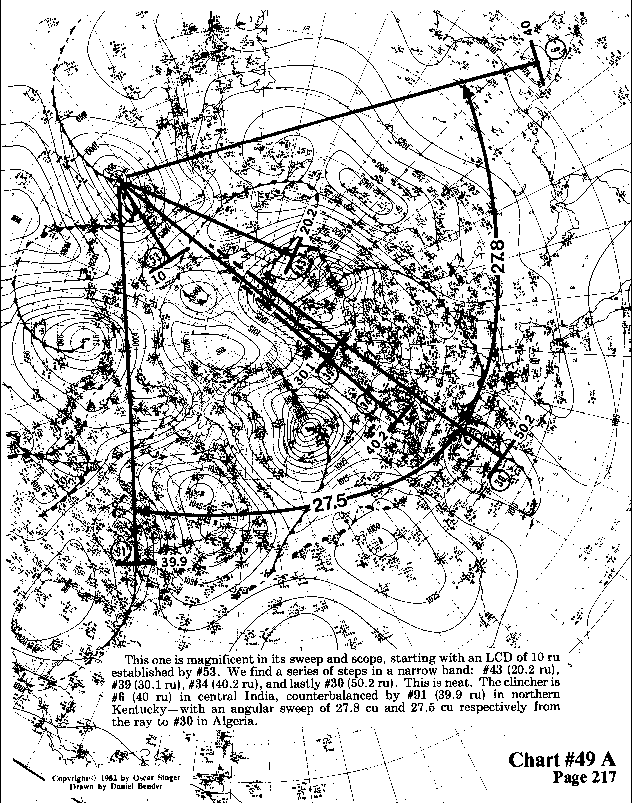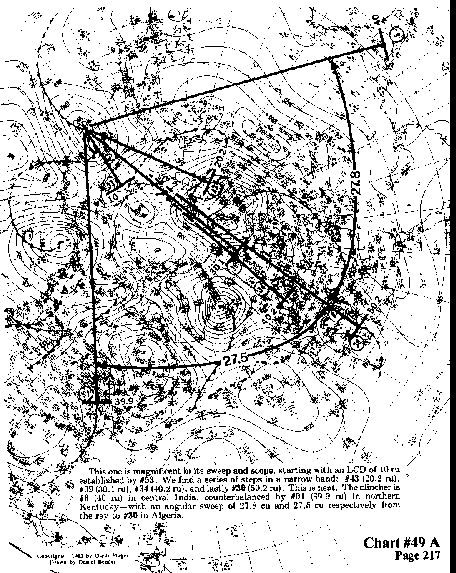

This one is magnificent in its sweep and scope, starting with
an LCD of 10 ru established by #53. We find a series
of steps in a narrow band: #43 (20.2 ru), #39(30.1 ru), #34(40.2 ru), and lastly #30(50.2 ru).
This is neat. The clincher is #6 (40 ru) in central India,
counterbalanced by #91 (39.9 ru) in northern Kentucky-with
an angular sweep of 27.8 cu and 27.5 cu respectively
from the ray to #30 in Algeria.
